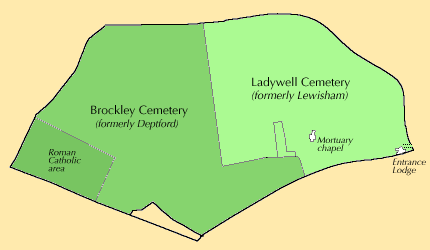Amy Atkins, born 17 April 1871 Woman Clark-Board of Education aged 73
Philip Atkins 17 Feb 1874. Retired Bank Clark, Bank of England, aged 70
Both the Atkins, brother and sister, died on the 18th June 1944, in the bombing of the Royal Military Chapel Wellington Barracks. Known as the Guards Chapel. Bird Cage Walk, just a few minutes from Buckingham Palace.
The worst loss of life cause by a V1
The Sunday morning service was packed with guardsman, their families and friends. when disaster struck. At 11.11 am, the congregation were about to sing the Te Deum. When the noise of a V1 was heard, (the sound of a cheap outboard motor, an old model Ford) the engine cut out, followed by a brief silence, an intensive blue flash and an explosion. The chapel was hit when the flying bomb nosedived on to the chapel roof, entered through the western end and exploded, destroying the roof, its supporting walls, concrete pillars and the portico of the western door. The congregation were buried in 10ft of rubble.
The death toll was124, 65 Military and 59 Civilians, (one unknown woman, buried in Westminster Cemetery) and well over a 100 injured, many seriously. The chapel was completely destroyed with the exception of the apse. The Bishop of Maidstone (Leslie Owen), who standing at the Alter was one of the very few left uninjured but he was very shaken by the explosion.
The rescue crews and first aid teams, found a scene of utter devastation with an assessment of 400-to 500 casualties. The debris appeared impenetrable, the collapsed roof and walls had left many trapped, with doctors and nurses obliged to scramble between the concrete walls to administer morphine and first aid. Several rescuers and survivors recalled that the silver alter cross had been untouched by the blast and continued to burn. (the same cross and candle sticks remain in regular use today)
Coordinated by the rescue services and guardsman from the barracks, the rescue effort went on, day and night, for 48 hours before the last body was removed. The incident was not declared closed until just before midnight on Wednesday, 21 June, 84 hours after the explosion. It was the largest loss of life through a V1 attack
The destruction of the Chapel was the largest single incident caused by the V1 Rockets.
You can visit the guards chapel today, which was rebuilt in the 1960's. The portico which sheltered the Bishop of Maidstone survived and forms part of the new structure.
Dates of Note; at the time
D Day the 6th June
Cassino, a month earlier
First Doodle Bug to hit London. 13th June 1944 fell in Bow. East London.
18th June 1915. Anniversary of the Battle of Waterloo (Guards battle honour)
Dundee Courier 26 December 1945
Despite wartime restrictions, a temporary chapel was erected in a Romney Hut attached to the undamaged apse and this was used from Christmas Day 1945 until 1962 when the rebuilding began.
The Funeral of Philip and Amy was held at St John the Baptist, Holland Road, a few doors from their home, on Monday, 26th June 1944, followed by cremation at Golders Green. Their ashes were later buried in Ladywell Cemetery, in the grave of their sisters Dora, Mabel and Kate.
Ladywell Cemetery. Plot No. D.125a
The grave of their parents Charles and Caroline, lies just to the front of the grave.
-------------
Put together By Phill Barnes-Warden. FoBLC Committee Member.
Research from the book by Jan Gore. Send More Shrouds: The V1 Attack on the Guards' Chapel 1944.Pen & Sword Books.
Also the websites
https://www.householddivision.org.uk/guards-chapel-about
https://theguardsdepot.co.uk/guards-chapel-v1-flying-bomb-wellington-barracks-1944/







